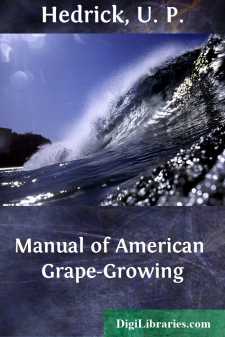Categories
- Antiques & Collectibles 13
- Architecture 36
- Art 48
- Bibles 22
- Biography & Autobiography 813
- Body, Mind & Spirit 142
- Business & Economics 28
- Children's Books 15
- Children's Fiction 12
- Computers 4
- Cooking 94
- Crafts & Hobbies 4
- Drama 346
- Education 46
- Family & Relationships 57
- Fiction 11828
- Games 19
- Gardening 17
- Health & Fitness 34
- History 1377
- House & Home 1
- Humor 147
- Juvenile Fiction 1873
- Juvenile Nonfiction 202
- Language Arts & Disciplines 88
- Law 16
- Literary Collections 686
- Literary Criticism 179
- Mathematics 13
- Medical 41
- Music 40
- Nature 179
- Non-Classifiable 1768
- Performing Arts 7
- Periodicals 1453
- Philosophy 64
- Photography 2
- Poetry 896
- Political Science 203
- Psychology 42
- Reference 154
- Religion 513
- Science 126
- Self-Help 84
- Social Science 81
- Sports & Recreation 34
- Study Aids 3
- Technology & Engineering 59
- Transportation 23
- Travel 463
- True Crime 29
Manual of American Grape-Growing
by: U. P. Hedrick
Categories:
Description:
Excerpt
PREFACE
Seventy-nine books on grapes enrich the pomology of North America, not counting numerous state and national publications. Pomological writers in America have been partial to the grape, for other fruits do not fare nearly so well. Twenty-two books are devoted to the strawberry, fourteen to the apple, to the peach nine, cranberry eight, plum five, pear nine, quince two, loganberry one, while the cherry, raspberry, and blackberry are not once separated from other fruits in special books. Thus, though a comparative newcomer among the fruits of the country, the grape has been singled out for a treatise more times than all other fruits of temperate climates combined—seventy-nine books on the grape, seventy on all other fruits.
This statement of partiality does not lead to an apology for a new book on the grape. There is urgent need for a new book. But three of the seventy-nine treatises on this fruit are contemporary, and all but one, a handbook on training, are records from vanished minds. Methods change so rapidly and varieties multiply so fast, that to keep pace there must be new books on fruits every few years. Besides, the types of grapes are so diverse, and different soils, climates, and treatments produce such widely dissimilar results, that many books are required to do justice to this fruit—the vineyard should be seen through many eyes.
Commercial grape-growing is now a great industry in America, and deserves a treatise or its own. But there are also many demands for information on grape-growing by those who grow fruits for pleasure, especially by those who are escaping from cities to suburban homes, for the grape is a favorite fruit of the amateur. And so, though Pleasure and Profit are a hard team to drive together, this manual is written for both commercial and amateur grape-growers.
In particular, the needs of the amateur are recognized in the
, where many sorts are described which have little or no commercial value. No other fruit offers the enchantment of novelty to be found in the grape. Alluring flavors, sizes, and colors abound, of which the amateur wants samples. The commercial grower who plants but one variety often finds himself dissatisfied with the humdrum of the business. He should emulate the amateur and plant more kinds, if only for pleasure, remembering the adage, "No profit grows where is no pleasure ta'en." Greater pleasure in grape-growing, then, is offered as the justification of the long chapter on varieties.At the risk of too broad spreading, the author discusses, in a book mainly devoted to native grapes, the culture of European grapes in the far West. The chief aim is, of course, to set forth information that will be helpful to growers of these grapes in the western states, there being no treatises to which western growers can refer, other than bulletins from state and national agricultural institutions. There is, however, another reason for attempting to cover the whole field of grape-growing in America....


